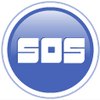Cleanroom Air Flow
13th May 2015
Texwipes help clean up any spills or contaminants. Sos Cleanrooms carries Texwipes such as the Betawipes™ which is a composite wiper for acids, etchants and chemical spills. Cleanrooms just don’t just happen they take engineering, strict controls, correct behavior and the correct air flow. The air in a clean room is controlled. The first line of defense when it comes to air in a clean room is the air filtration system, but there is more than one way to filter air for a clean room. There is non-unidirectional airflow which is used from clean rooms class 1000 & 10000, and unidirectional airflow known as Laminar air flow, which is used for cleanrooms class 100 and below. In a non-unidirectionall filtration system, very effective filters are used. These filters are so efficient that they can remove 99.9% of all microparticles from the air before it enters the cleanroom. These systems use turbulent airflow filters to keep the air clean. Normal filtration systems circulate the air 0.5 to 2 times an hour, but a cleanroom filtration system changes the air at least 10 times an hour.
The second type of control in a cleanroom is called Laminar air flow. This is where the air is blown in unidirectional, unimpeded, parallel lines so that the normal jetties and swirls that occur in a non-clean room don’t occur. If this were to occur, particulates, and contaminants could move horizontally across the room in uncontrolled and random pattern creating an unpredictable pattern of contamination. Laminar air flow also uses HEPA filtration to filter the air that is being directed from the ceiling to the floor.
